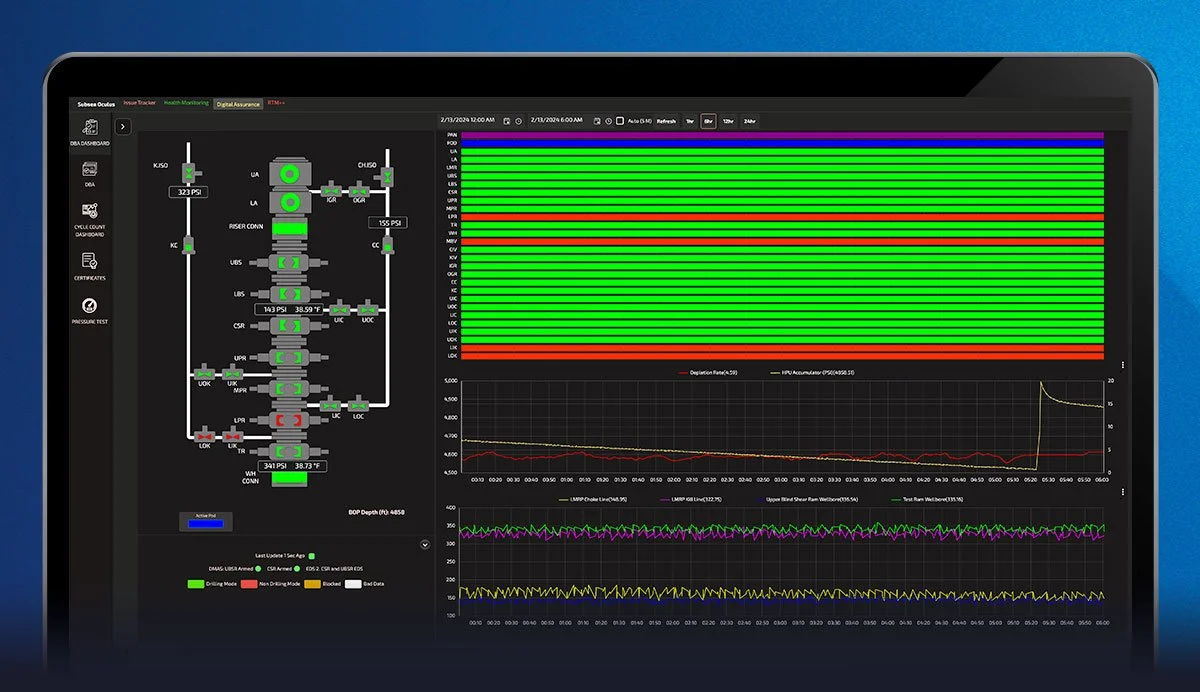Enhancing compliance in oil and gas
The critical role of BOP reliability and digital technologies
In the dynamic world of oil and gas extraction, ensuring compliance with industry standards is paramount. From environmental regulations to safety protocols, every aspect of operations must adhere to stringent guidelines to mitigate risks and maintain operational integrity.
Among the crucial components in this ecosystem is the Blowout Preventer (BOP), a vital safety mechanism that prevents uncontrolled release of hydrocarbons during drilling operations.
Join our Newsletter to stay up to date on new Advancements, Announcements & more
Field Engineers:
Custodians of BOP Reliability
At the heart of compliance assurance lies the diligent efforts of field engineers who conduct regular inspections of BOP systems. These professionals meticulously examine every component, verifying its integrity and functionality. One of the key aspects of their job is to ensure that all documentation is in place, including relevant certificates CoC's (Certificate of Conformance) and compliance records. This meticulous attention to detail not only demonstrates adherence to regulatory requirements but also instills confidence in the reliability of BOP systems.
Real-Time Monitoring:
Proactive Compliance Management
Real-time monitoring capabilities have revolutionized compliance management in the oil and gas sector. By leveraging advanced sensors and data analytics, operators can continuously monitor BOP performance parameters, detecting anomalies and deviations in real-time. This proactive approach enables swift intervention in case of any non-compliance issues, preventing potential safety hazards and operational disruptions.
Digital BOP Assurance:
Automating Compliance Checks
Digital BOP assurance tools integrate features such as compliance checks to streamline regulatory adherence. For instance, compliance check features integrated into systems like API Standard 53 ensure that BOP operations align with prescribed guidelines such as gallon counts and timing.
This automated validation mechanism minimizes the risk of human error and ensures that every aspect of BOP functionality meets regulatory requirements. By embracing digital BOP assurance tools, operators can enhance compliance efforts and ensure operational excellence.
Digital Pressure Testing:
Enhancing Accuracy and Efficiency
Digital pressure testing offers a more accurate and efficient method of assessing BOP performance. By digitizing the testing process, operators can obtain real-time data and insights, enabling them to identify potential issues proactively and take corrective actions swiftly.
This technology not only improves data accuracy but also enhances operational efficiency, reducing downtime and associated costs. Additionally, the innovation of automated compliance checks with API Standard 53 ensures the precision of compliance documentation in Digital Pressure Testing reports (First of its kind in industry).
This integration streamlines regulatory adherence, minimizes the risk of human error, and guarantees accuracy in compliance reporting, further enhancing the reliability and effectiveness of digital pressure testing in ensuring BOP compliance and operational integrity.
However, embracing digital transformation in compliance management requires a strategic approach. Operators must invest in robust infrastructure, employee training, and cybersecurity measures to reap the full benefits of digital solutions while mitigating associated risks.
Conclusion
In conclusion, ensuring compliance in the oil and gas industry requires a multifaceted approach that leverages both human expertise and technological innovation.
Field engineers play a crucial role in upholding BOP reliability through rigorous inspection processes, while real-time monitoring and digital BOP assurance tools enhance compliance efforts by providing accurate data, automated validation, and proactive maintenance capabilities.
By embracing these advancements, operators can meet regulatory requirements, enhance operational efficiency, and ensure safety standards, ushering in a sustainable future for the industry.






